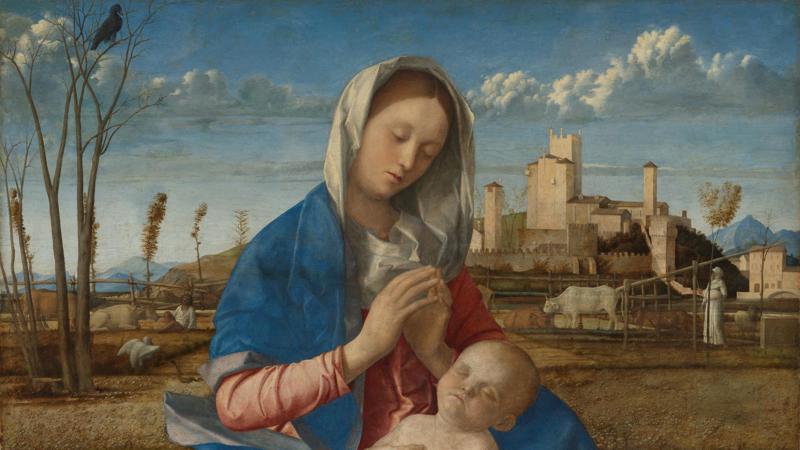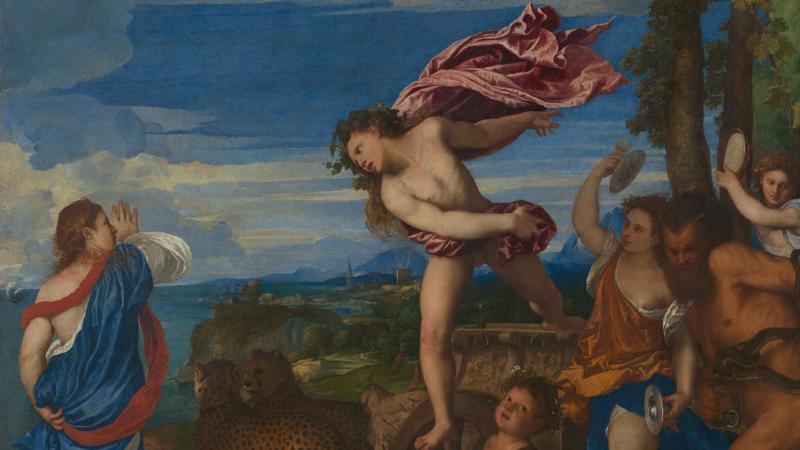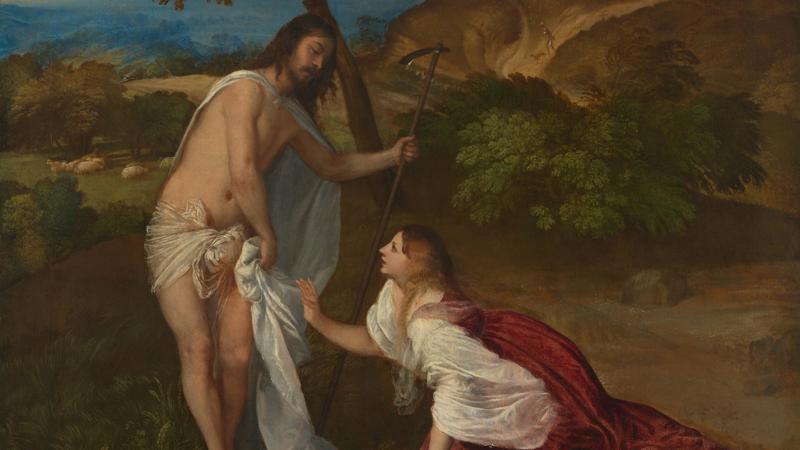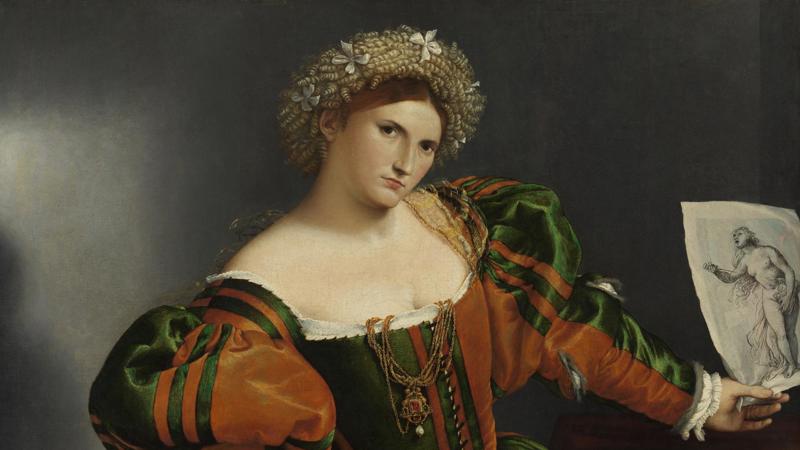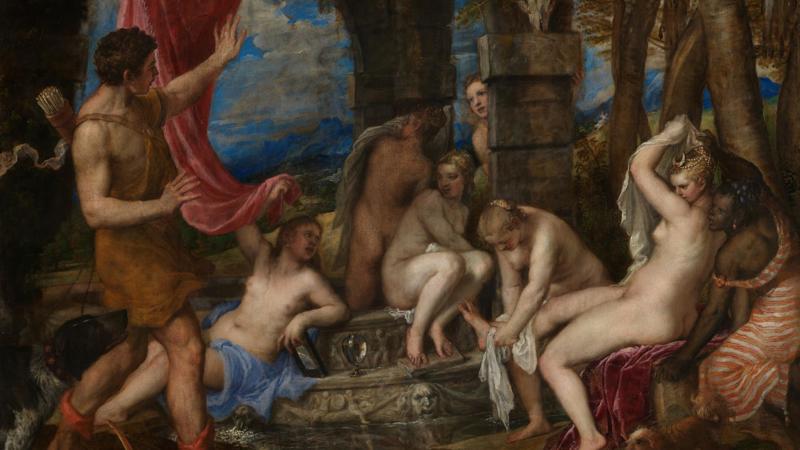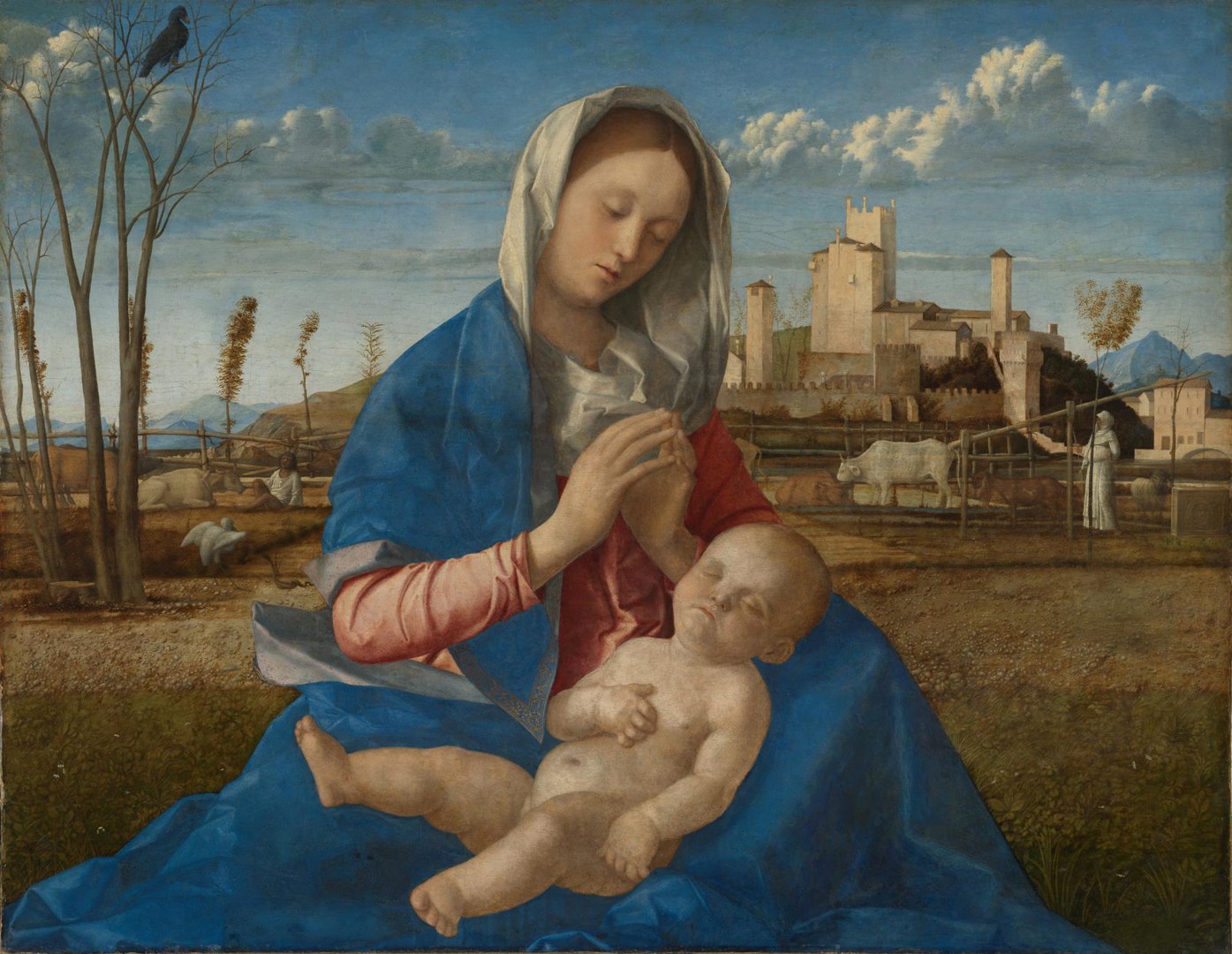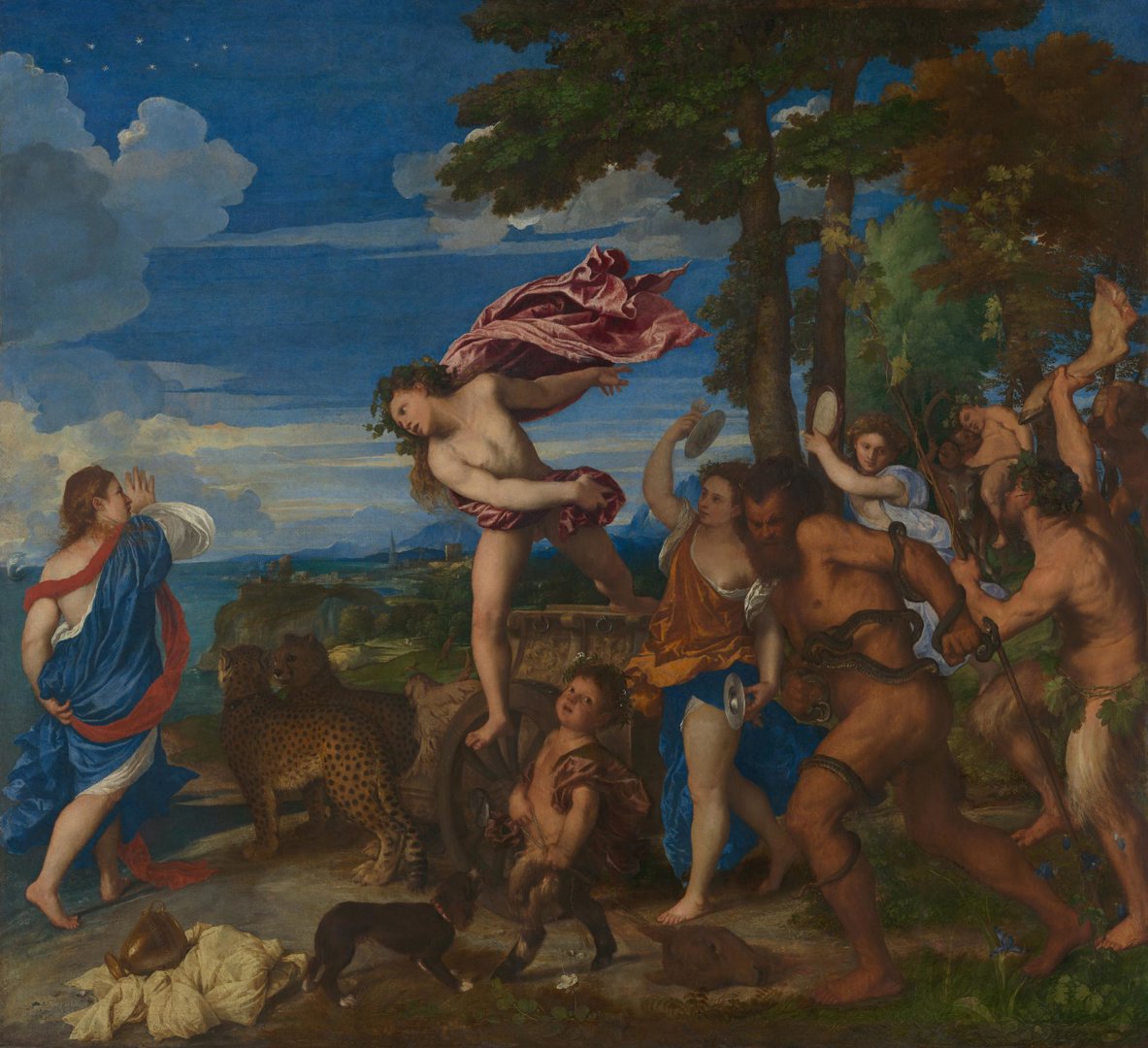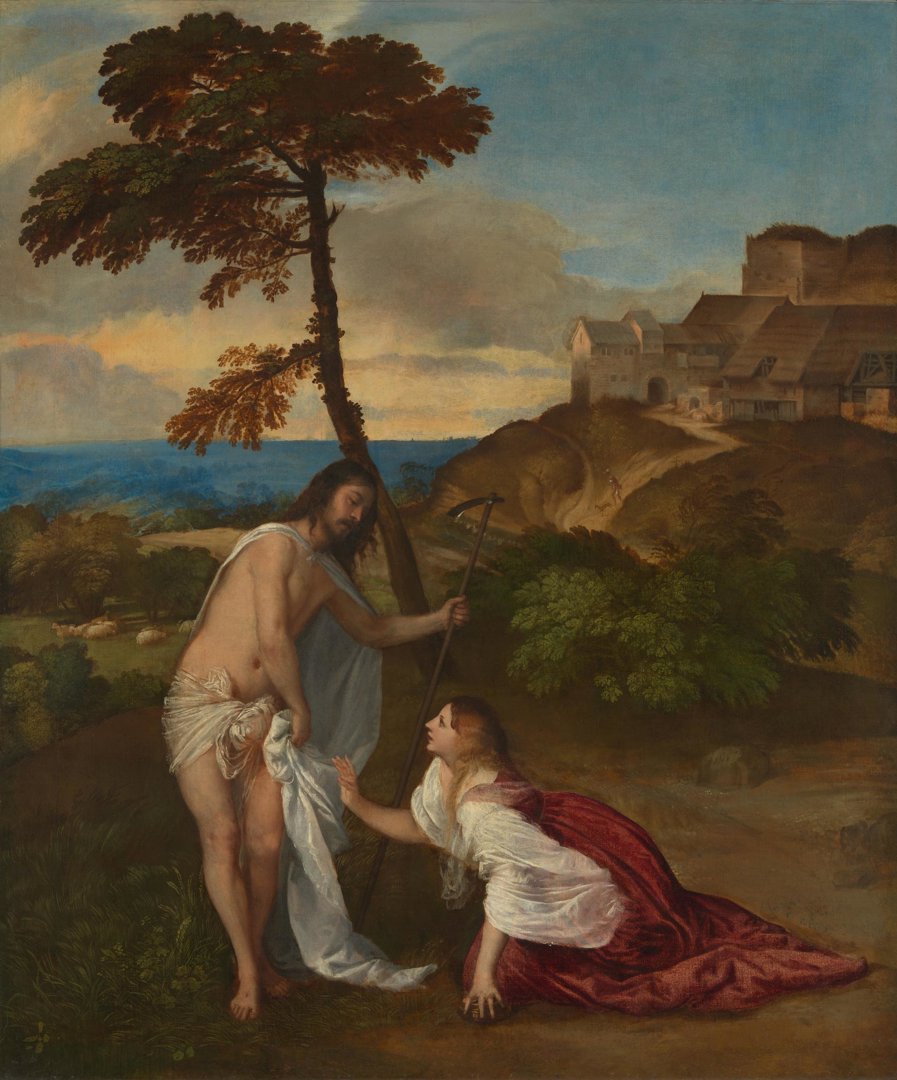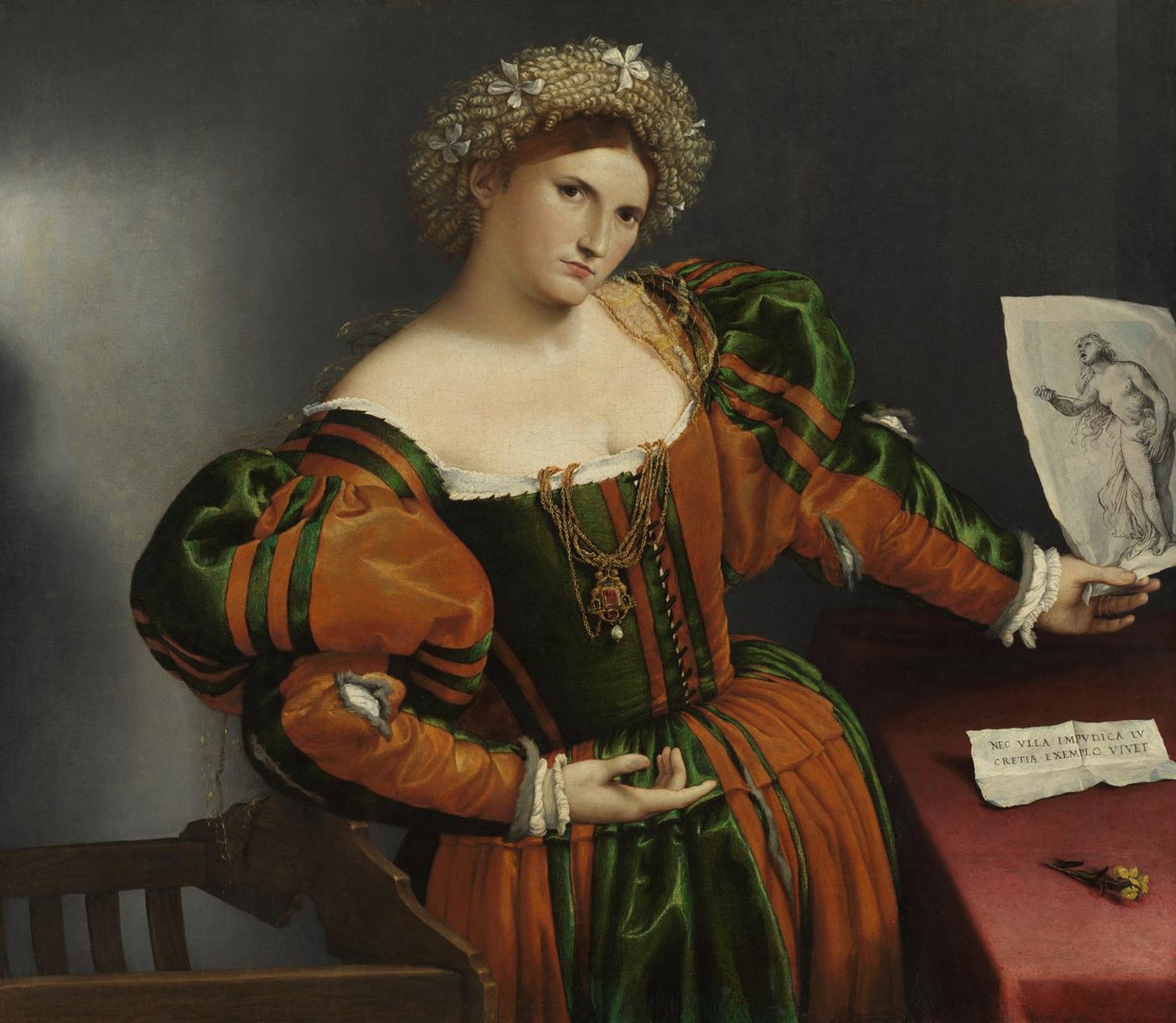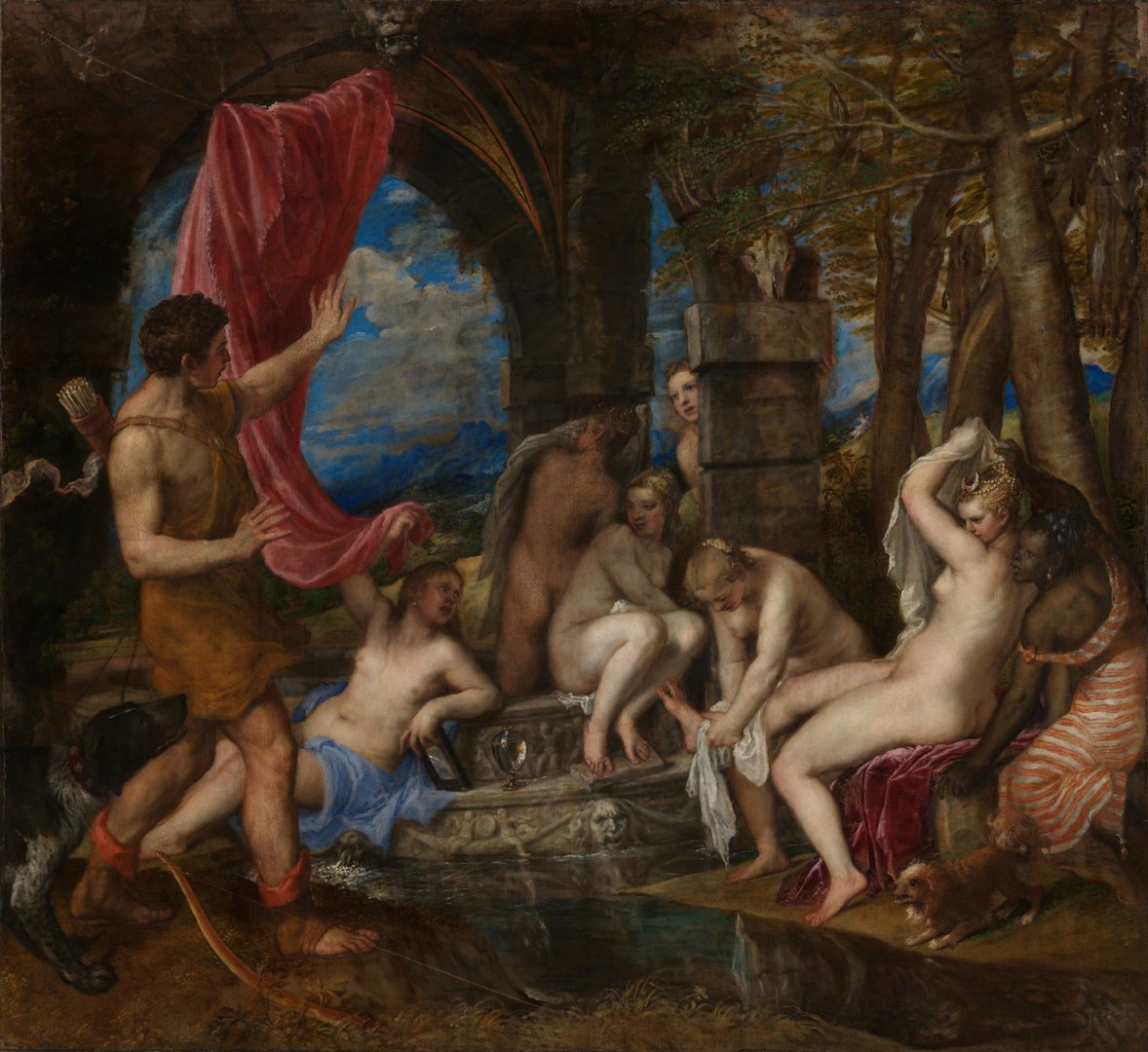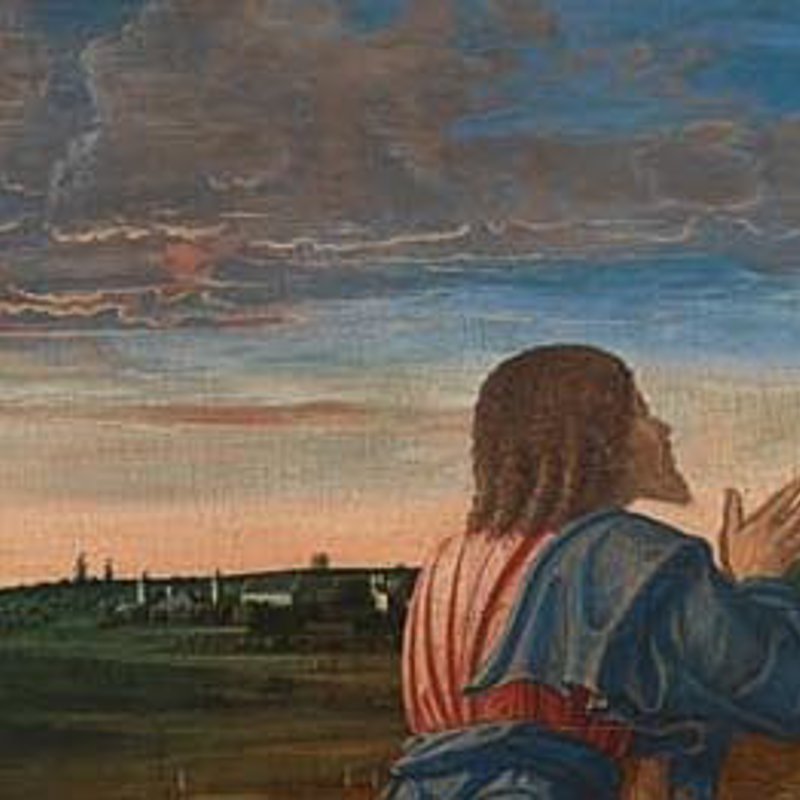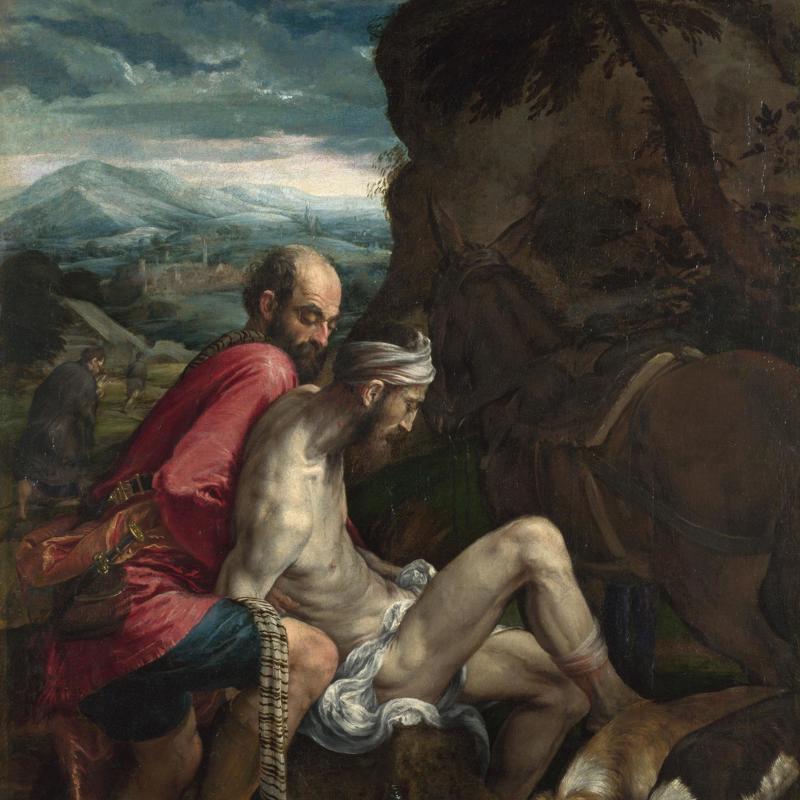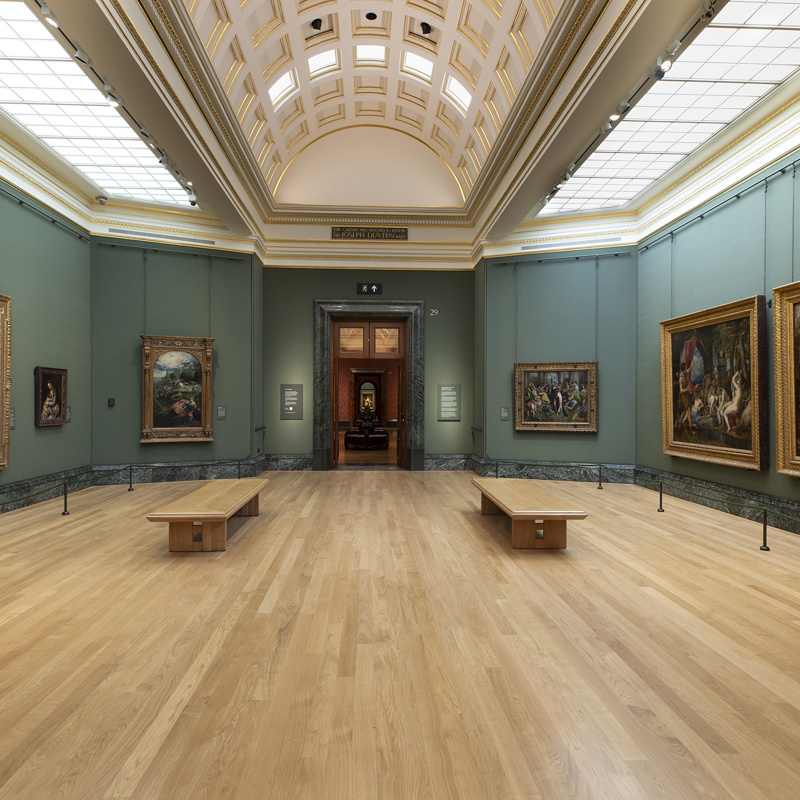The Madonna presented the most pervasive, and unattainable, role model of female behaviour. The image of the immaculate Mother of God informed ideas for the role of women in contemporary Venetian society.
Here, Bellini paints her serene, gazing down, absorbed by her sleeping child. Her body forms a pyramidal solid mass from which only her hands and face emerge; monumentalised as the ideal of a mother and child. Images of the Madonna set in a landscape were especially popular in early Venetian painting.
In Greek mythology, Ariadne was the daughter of Pasiphae and Minos, the Queen and King of Crete. Using her wit and intelligence, she helps the Athenian hero Theseus slay the monstrous Minotaur, her half-brother, who is hidden away in an impossible Labyrinth and fed on human sacrifice.
Ariadne provides Theseus with thread to trace his path out of the maze and escape. The pair flee Crete, but Theseus abandons Ariadne on the island of Naxos. In Ovid's version of the myth, on which Titian drew, Ariadne rages against Theseus who returns to Athens boasting of his victory without acknowledging her role in his success.
In the 16th-century, Mary Magdalene was an example of how repentance could redeem even the worst of sins. In the Garden of Gethsemane, the grieving Mary Magdalene encounters Christ in his resurrected form. She reaches out her hand, but he responds, ‘Do not touch me’ (in Latin, 'noli me tangere').
Titian plays on the juxtaposition of female sensuality and sanctity combined in the figure of the Mary Magdalene. Her exposed arms, unbound hair and loosened veil add a heightened eroticism, as does Christ’s partially nude form. However, this sensuality is part of the spiritual intensity of their encounter. At the moment that Mary Magdalene yearns to embrace Christ, she realises this will only be possible once she too transcends her physical form.
Though unidentified, the woman in this painting may possibly have been a real person, and suggests unusual agency on the part of the sitter.
She holds an ink drawing of the Roman heroine Lucretia who stabbed herself with a dagger after being raped to preserve her family’s honour. In the 15th and 16th centuries, Lucretia was celebrated as an exemplary figure of chastity and wifely virtue. The sitter was perhaps called Lucretia and portrayed in the guise of her allegorical namesake, as was common with such portraiture at the time.
The slight disarray of her clothing and open neckline have in the past been used to interpret this is a portrait of a courtesan. However, her jewellery is typical of that worn by married women. With her direct gaze and vibrant orange and green striped velvet dress, this woman seems to possess striking assertiveness, complicating a simple idea of female virtue.
For Titian, depicting beautiful women was a means of asserting not only his artistic talents but also superiority. Painting Diana and her nymphs from a variety of viewpoints and differing poses, he demonstrates his intuitive understanding of the female form, very much intended for the enjoyment of his patron King Philip II of Spain.
We are not certain of the real identities of Titian’s models, though sex workers among Venice’s well-established courtesan culture often posed for artists. Titian’s fluent layering of shimmering colour and textural brushwork aptly convey the sensuality of the female form.


